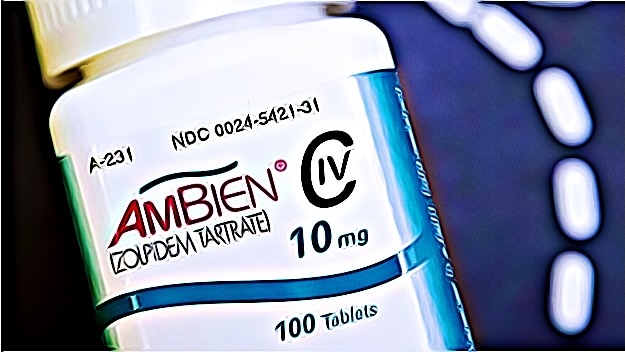Ambien is a powerful drug that falls under the category of sedative-hypnotics. This drug activates a neurotransmitter, GABA, which operates to slow down the brain and central nervous system. Often, this drug is prescribed to individuals to treat insomnia but is only meant to be used for a short period.
Because Ambien is used to help initiate sleep, it can be safe when used responsibly. But like any sedative drug, misuse can lead to long-term tolerance, dependence, and withdrawal which could be incredibly harmful to the recipient.
Ambien Withdrawal
Physical dependence on Ambien can come in various forms and can gradually grow in about two weeks. Since Ambien is characterized by tolerance, those who misuse the drug build a strong tolerance, making large doses feel the same and withdrawals much more challenging.
Ambien withdrawal is challenging for many users because it involves changes in their brain activity. After all, you want to reestablish normal activity.
Ambien withdrawal is a complex process because withdrawal from the drug has an opposite effect than when you take it; stopping doses can lead to severe symptoms and side effects.

Ambien Side Effects and Symptoms
Ambien Side Effects
There are a bunch of side effects that come with Ambien; some include the following:
- Drowsiness during the day;
- Dizziness;
- Feeling weak and lightheaded;
- “Drugged” feeling;
- Tiredness;
- Loss of coordination or motor skills;
- Nasal irritation and stuffy nose;
- Dry mouth and sore throat;
- Constipation or diarrhea;
- Nausea;
- Muscle pain;
- Confusion;
- Insomnia;
- Euphoria;
- Ataxia or balancing problems, and;
- Visual changes.
Withdrawal Symptoms
It’s quite difficult to pinpoint when a person is withdrawing from Ambien because the changes usually occur in the brain. And because the main goal is to reestablish normal brain activity, abruptly stopping doses of Ambien may lead to severe symptoms.
However, there are physical symptoms that you can take note of, such as:
- Agitation and irritability;
- Fever;
- High blood pressure;
- Sweating and shakiness;
- Stomach cramps;
- Insomnia;
- Convulsions;
- Nervousness;
- Uncontrollable crying and panic attacks
- Nausea and vomiting.
Duration of Ambien Withdrawal
The timeline for Ambien withdrawal will vary from user to user, and their symptoms may last for a few days, and for severe cases, several weeks. Heavy Ambien users are most likely to struggle from withdrawal symptoms and may take a generally long time before they can fully recover, as compared to moderate users.
A typical Ambien dose is 5 mg a day, but those who misuse the drug would often take much larger doses and go for 10 to 20 mg per day; in some serious cases, it could reach up to hundreds.
Because the chemical make-up of Ambien is quite similar to benzodiazepines like Xanax and Valium, withdrawal symptoms from Ambien and benzos are relatively the same.
In most cases, moderate users will be symptom-free after two weeks, and the worst part of the withdrawal face may fall within the third to fifth day. Symptoms that remain after two weeks are no longer considered acute withdrawal symptoms and are now known as post-acute withdrawal symptoms or PAWS.
PAWS symptoms may last up to 18 to 24 months, depending on a variety of factors. However, the symptoms will reduce in severity over some time. Some of the common PAWS include poor concentration, anxiety, insomnia, poor appetite, mood-swings, agitation, and irritability.
Ambien Withdrawal Timeline
- The First 48 Hours
Scientifically, Ambien has a half-life of two hours, which means it’s shorter than most sedatives. A half-life is how long it takes a drug to leave the body, and with that, the withdrawal symptoms will appear within 48 hours of the individual’s last dose. In some cases, individuals will start to experience more symptoms on day one or day 2 of withdrawal.
- Day 3 to Day 5
After 48 hours of the last Ambien dose, withdrawal symptoms will begin to manifest. The symptoms that begin to show on days 3 to 5 are the most severe for people who misuse the drug.
Users will often experience confusion, mood swings, and memory loss. Besides that, individuals will have difficulty sleeping and could feel nauseous and shaky. Additionally, during this time, panic attacks are most likely to happen, and a rebound of insomnia may pose as a struggle.
- Week 1 to Week 2
After the peak of withdrawal symptoms, former Ambien users will begin to feel normal again as the severe symptoms start to decrease. Symptoms will begin to fade slowly when you reach the second week of withdrawal, and patients will start to sleep normally without needing Ambien.

Ambien Overdose
When potent drugs and sedatives are involved, there is always a considerable chance of harmful consequences — Ambien is no exception to this. However, the drug does require a huge amount before it can fall under the fatal territory.
Ambien is a fast-acting drug that remains in the body for a relatively short time and can be gone from your system in a matter of hours. But for doses to become deadly, one must take high quantities in a short amount of time.
Medically sanctioned and prescribed Ambien doses, as mentioned earlier, start within the 5 to 10 mg range. And when a user passes this threshold, the drug can quickly become dangerous to one’s health. 70 mg can create complications to the body, and recreational use — often reaching 400 to 600 mg — can lead to an overdose.
Additionally, you should know that mixing alcohol and Ambien can have disastrous consequences, and those with substance disorder are more likely to abuse this drug and fall depending on the effects of Ambien.
Is Ambien Addictive?
When someone is dependent on Ambien, you may find that they constantly ask for the refilling of prescriptions, take larger doses than what is prescribed, crave the drug, spend enormous amounts of money on it, and prefer being isolated from friends and family. Additionally, Ambien abuse can lead to more sleeping problems, making it much harder for the individual to cut it out of their life completely.
Because Ambien addiction can quickly develop, it’s important to take steps to curb dependence under the guidance of a doctor, therapist, and support groups.
The Bottom Line: Ambien Can Lead to Dangerous Consequences When Misused
Like any drug and sedative, mishandling and misuse of Ambien can lead to severe complications that could potentially lead to death. Now that you have an idea of what Ambien is, its side effects, withdrawal symptoms, and how addictive they could be, it’s best to help out your loved one who’s struggling with Ambien misuse.
Most of the time, drug users need a space where they feel safe, seen, and listened to. If you know someone struggling with Ambien abuse, educate yourself on the issue and communicate with them — find better ways to help them go through the journey to sobriety.
Thankfully, various platforms could help you find an addiction treatment facility that would help your loved one battle Ambien addiction.
Source:
https://www.accessdata.fda.gov/drugsatfda_docs/label/2008/019908s027lbl.pdf

